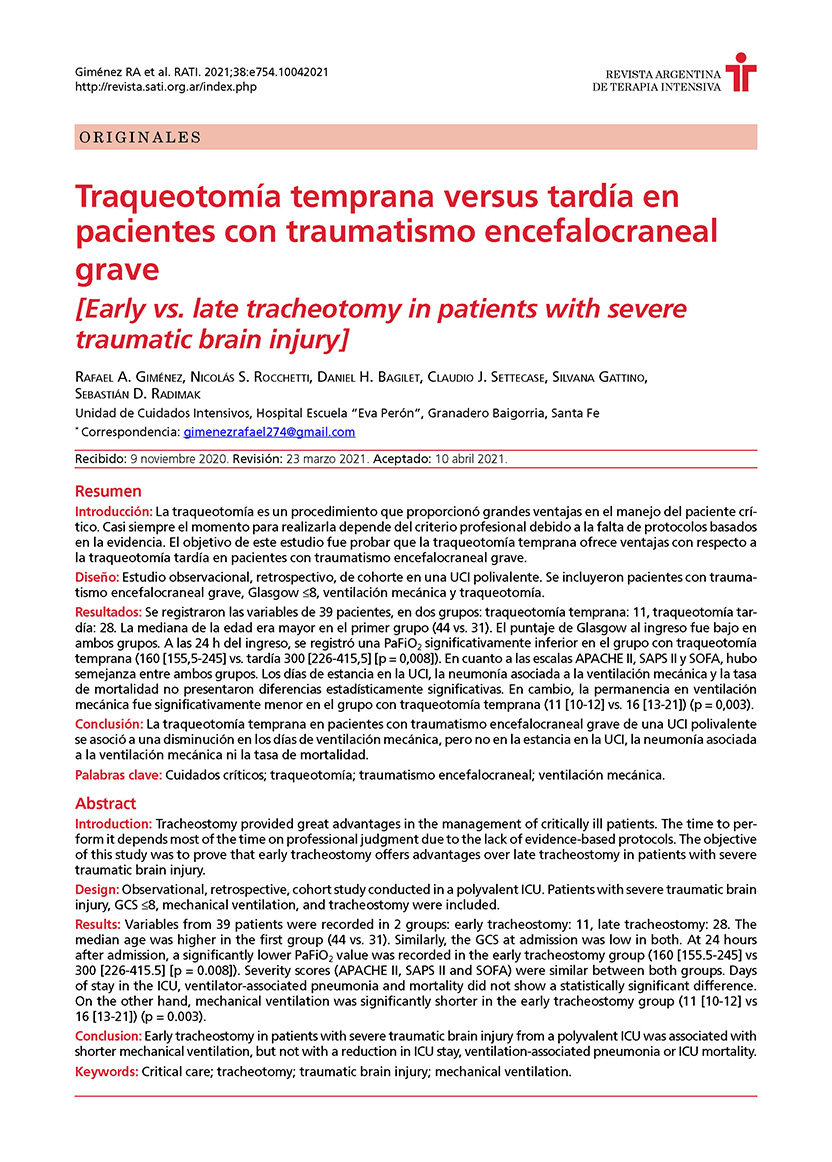Resumen
INTRODUCCION: La traqueotomía es un procedimiento que proporciono grandes ventajas en el manejo del paciente crítico. El momento para realizarla depende la mayoría de las veces del criterio profesional debido a la falta de protocolos basados en la evidencia. El objetivo de este trabajo, es probar que la traqueotomía temprana (TTE) ofrece ventajas con respecto a la traqueotomía tardía (TTA) en pacientes con trauma encéfalo craneano (TEC) grave.
METODOS: Estudio observacional, retrospectivo, de cohorte realizado en una UCI polivalente. Se incluyeron pacientes con TEC grave, GCS (Glasgow Coma Scale) ≤8, con ventilación mecánica (VM) y traqueotomía.
RESULTADOS: Se registraron las variables de 39 pacientes, en 2 grupos. TTE: 11, TTA: 28. La mediana de edad resulto mayor en el primer grupo (44 vs 31). De la misma manera el GCS al ingreso fue bajo en ambos. A las 24 hs del ingreso se registró un valor de PaFiO2 significativamente menor en el grupo TTE (160 [155,5-245] vs TTA 300 [226-415,5], [p=0,008]). En cuanto a las escalas de severidad (APACHE II, SAPS II y SOFA) hubo semejanza entre ambos grupos. Los días de estancia en UCI, neumonía asociada a VM (NAV) y mortalidad no presentaron diferencia estadísticamente significativa. En contra posición a estos, la estancia en VM fue significativamente menor en el grupo TTE (11 [10-12]) vs TTA (16 [13-21]), p=0,003.
CONCLUSION: La TTE realizada en pacientes con TEC grave de una UCI polivalente, se asoció a una disminución en los días de estancia en VM, pero no en la estancia en UCI, NAV ni mortalidad en UCI.
La revista no retiene los derechos de reproducción (copyright) por lo que los autores pueden volver a publicar sus trabajos con la sola mención a la fuente original de publicación.

